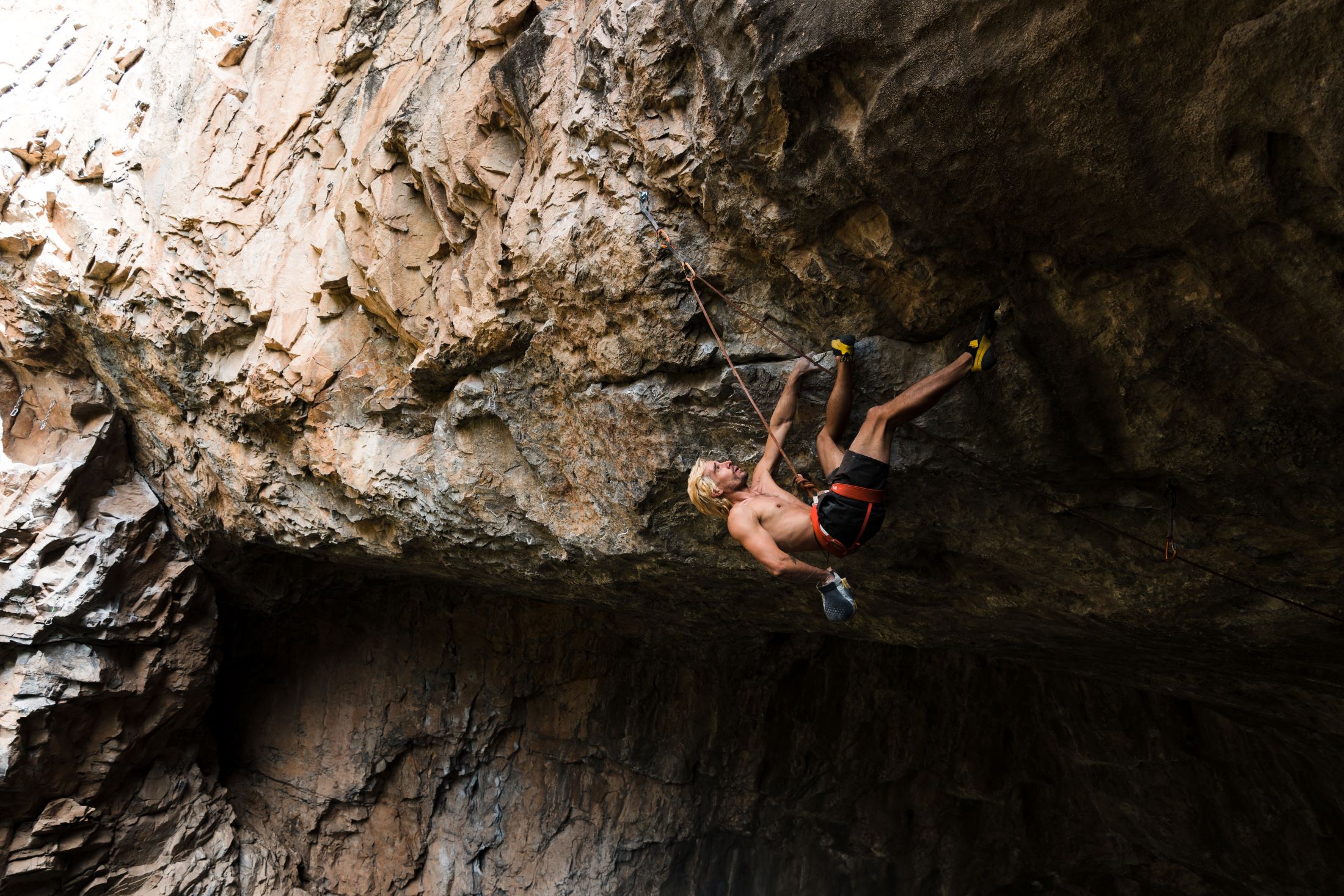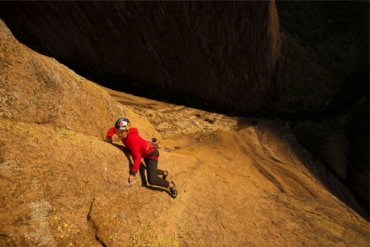The United States is not like Europe, where a single region might have multiple lifetimes’ worth of sport climbing. And be adjacent, only a half day’s drive, from another region that’s equally laden with perfect limestone cliffs.
For example, on the continent, the epic destination areas of Céüse, France, and Siurana, Spain, are only 8 hours apart. But driving 8 hours east from my home in Boulder, Colo., lands me in the plains of Kansas — not even halfway to the Red River Gorge. On the plus side, our country’s size and geologic and geographic diversity also mean our sport climbing areas have lots of character, each with its own unique climbing style and history.
Though you wouldn’t know it now, given how many Americans sport climb and how many get into it via the gym-to-crag pipeline, there was initial resistance to sport climbing in the U.S. Bolt wars were fought in the late 1980s as the first sport climbs appeared around the country, to the chagrin of certain old-school trad climbers.
Today, however, sport climbing development continues apace. New routes go up on our abundant sandstone, limestone, granite, and volcanic rock, particularly in the Southeast and West.
Picking the top five options from among America’s many sport climbing cliffs was a tall order. But some clear winners emerged when factoring in things like rock quality, quantity and grade range of routes, access and camping, and weather. The mega-destination crags are listed below, each with more four-star classics than one person would ever have time to climb.
Best Sport Climbing Areas in the United States
1. Red River Gorge, Kentucky: Pump Fests at All Grades
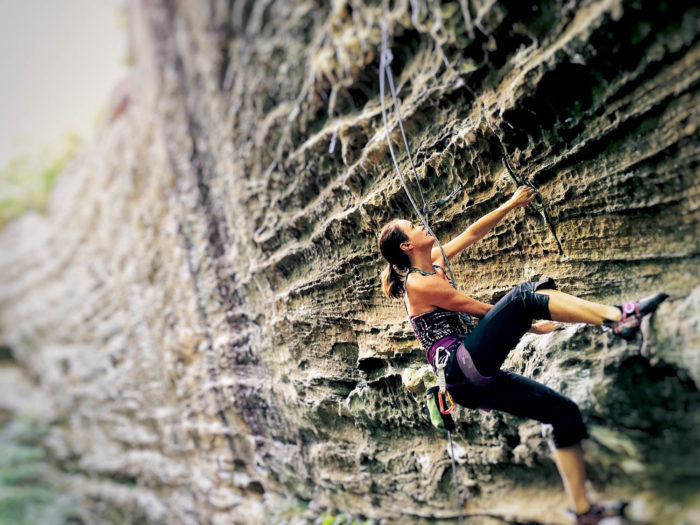
Yes, Europe, with its untold perfect limestone crags, has the best sport climbing in the world. But it’s telling that the Corbin sandstone of the Red so rivals Europe in quality that, during the busy fall season, you’re just as likely to see international climbers at the Red as Americans.
The featured, vertical to radically overhanging pocketed stone, which often forms in the Red’s trademark amphitheaters (“hollers”), is that good. And there are thousands of climbs, all in proximity, with gobsmacking classics at every grade from 5.10a to 5.14d. There are rope-stretching, mega-pump-fest pitches on handlebar buckets and incut pockets so deep you can’t believe you’re falling off them. Until you hit the end of the rope and feel the lactic acid soaking your forearms.
The Red was originally a traditional area, with a host of classic crack pitches up corner cracks and splitters, especially in the Northern Gorge region. But the Lexington local Porter Jarrard and friends got things rolling with the area’s first sport routes in the early 1990s. The climbs they put up on OG walls like The Motherlode, Military Wall, and Left Flank are still sought-after classics today.
There is a staggering amount of rock, much of it still undeveloped. Still, thanks to efforts by local bolters and the tireless Red River Gorge Climbers’ Coalition, new climbs continue to go in. Recent areas like Muir Valley and Miller Fork offer hundreds of stellar options, often at more-approachable grades.
The Basics
- Season: Autumn through spring (it can be cold and snowy in winter, though you also get dry, warm days with highs in the 60s); summer is a sauna, even in the shade.
- Camping: The best option on a budget is Miguel’s Pizza, a restaurant that has evolved into a massive climber campground as the Red gained popularity. Or check out the Bald Rock Cabins & Campground above The Motherlode or Lago Linda. There are also tons of climber-friendly Airbnbs.
- Guidebooks: Red River Gorge Rock Climbs South covers the bulk of the sport areas, or you can go for Red River Gorge Select, which also includes the northern region crags and Miller Fork. Route development is ongoing, so supplement with Mountain Project beta.
- Recommended routes: Pogue Ethics (5.9+), Plate Tectonics (5.10a), Loompa (5.10c), Breakfast Burrito (5.10c/d), Amarillo Sunset (5.11b)
2. Ten Sleep, Wyoming: Pocket-Pulling Paradise
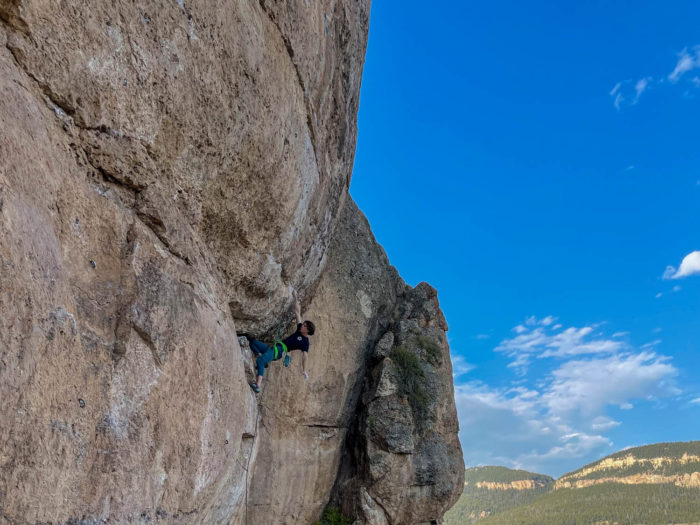
In terms of kinaesthetically pleasing climbing movements, there’s none better than sinking your digits into a deep, incut Ten Sleep four-finger mouth right as the pump clock expires. Your feet toed into tiny limestone spikes as your body tension wavers, and you prepare to take the ride. But then, somehow, you’re still on, panting for oxygen in the mountain air, looking out over the sea of ponderosa trees that stretch to the canyon floor and out into the wilds of Wyoming.
Ten Sleep is a sport climber’s paradise, stacked with hundreds of fun, gently overhanging climbs on white, blue, tan, orange, and black dolomite limestone. The rock is riddled with tiny pockets and crimps that let you come up with your own solution for most cruxes. But they also demand technical precision and steady, controlled movement.
Sport climbing activity began here, sporadically, in the late 1980s. But the real route explosion didn’t happen until the 1990s and beyond. Climbers realized the rock was much better than it looked from afar and that it offered staggering potential on its smooth panels, bulges, and arêtes.
Ten Sleep is ideal in summer, and many of the best crags face east, making them perfect in the afternoon. However, the cliffs start low in the canyon and run up through the meadowed highlands near Powder River Pass (9,666 feet). This means you can find “air-conditioned” crags even on the hottest days when the town of Ten Sleep bakes in triple-digit heat.
The Basics
- Season: Late spring through early autumn (the area is best in high summer, especially at the higher-elevation crags)
- Camping: There are dozens of undeveloped sites along the Old Road, though these get snatched up quickly; you’ll find other camping options throughout the Bighorn National Forest — pick a campground or dirt road and explore. Climbers also stay at the Ten Sleep Rock Ranch, near the mouth of the canyon.
- Guidebooks: Ten Sleep Canyon Guidebook (10th Edition) and Ten Sleep Canyon Climbing
- Recommended routes: Death Flake from HELL (5.10a), Beer Bong (5.10b), The Eldorado Coral Club (5.10d), Slightly Toasted Cracker (5.11c), Center El Shinto (5.12b)
3. Rifle, Colorado: Limestone Sport Climbing Mecca
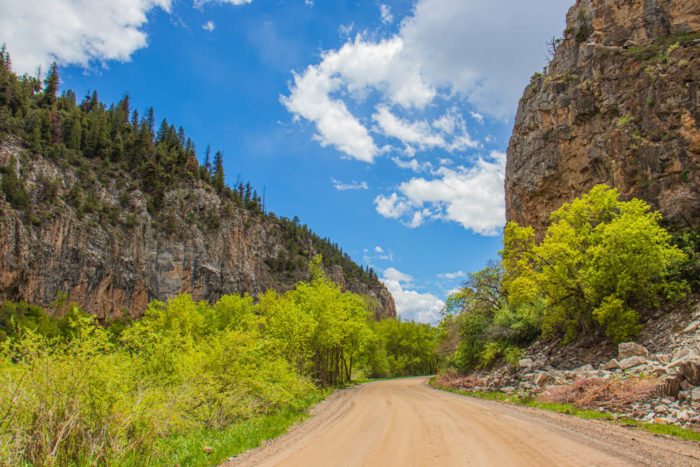
Rifle is known primarily as a hard person’s crag. It houses a predominance of routes from 5.12 up through enduro cave-climbing benchmarks like The Crew (5.14c), Bad Girls Club (5.14c/d), and Kinder Cakes (5.15a). But it also shines in the more moderate grades, with fun, challenging, technical 5.10s and 5.11s on the vertical panels. These routes often tackle puzzling flakes and layback features that are reminiscent of traditional granite climbing.
Thanks to the Rifle Climbers’ Coalition, which has worked closely with the City of Rifle on the new-route permitting process, there has been a steady stream of more moderate walls developed in the past two decades. The non-approach to the cliffs in this tight canyon and relatively cool summer temps at 7,000 feet on Colorado’s bucolic Western Slope makes it an easy crag to like.
First-timers are often frustrated by Rifle’s slippery rock (the limestone polishes quickly and has seen 30 years of traffic on the older climbs). Bizarre features like big, open-hand, soapy pinches and flat, sloping bevels pump the unholy hell out of unprepared forearms.
But a few days of apprenticeship on this unique stone and clueing into the ubiquitous Rifle kneebar will take the sting out. The grades may even start to feel reasonable, though Rifle is still tough for on-sighting. Not to worry, however: The locals have all the climbs insanely dialed and won’t hesitate to shout beta up at you while you chicken-wing at that cryptic crux!
The Basics
- Season: Spring through autumn (spring can be seepy; check conditions before your trip)
- Camping: There are lovely pay spots in the popular Rifle Mountain Park campground above the canyon proper, or drive up the road into the Flattops and White River National Forest.
- Guidebook: Rifle: A Climber’s Guide
- Recommended routes: Spuds in Space (5.9-), Merry Maids (5.10a), Malmsteen (5.10d), Rumor Has It (5.11b), Feline (5.11b)
4. New River Gorge, West Virginia: Sport Climbing on Impeccable Sandstone
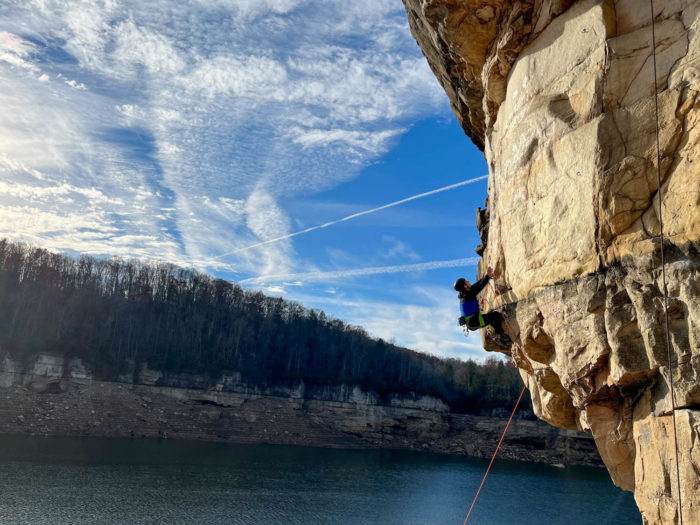
Like the Red, the New was originally a trad area that saw some of America’s first sport climbs. Curious climbers from the mid-1980s onward started to wonder about all the featured faces between the crack lines. The Nuttall sandstone is legendary, famed for its tight grain, psychedelic hues, flat horizontals and tiny crimps, peerless technical movement, monolithic faces, cleaved arêtes, and friendly friction.
The rock mostly comes in two flavors: technical and vert/gently overhanging or massive caves and roofs like the Cirque, Glory Hole, and the Coliseum. In recent years, the New has also seen concerted bouldering development on the house-sized blocks that broke off the cliff lines and tumbled into the gorge.
The New is stacked with hundreds of climbs. A good bet for your first visit is the well-named Endless Wall, an unbroken stretch of a south-facing cliff on the north side of the gorge. It is accessed via Indiana Jones-style chimneys and ladders that take you to the base. There awaits a panoply of four-star classics in the 5.10 to 5.13 range.
The one major caveat is the climate. It rains 180-plus days a year, dumping an average of 37 inches of rain on nearby Fayetteville. You can hide in the caves during the inevitable downpours, but the vertical walls get soaked. But they are quick to dry with some sunshine and a breeze.
The Basics
- Season: Autumn through spring (summer is hot and muggy — locals only!)
- Camping: The American Alpine Club’s New River Gorge Campground, upon the scenic gorge rim, is the way to go.
- Guidebook: New River Rock Volume 1: The Main Gorge
- Recommended routes: Mrs. Field’s Follies (5.8), Flight of the Gumby (5.9+), Rico Suave (5.10a), Legacy (5.11a), Under the Milky Way (5.11d)
5. Mesquite, Nevada/St. George, Utah/Arizona Strip: Incredible Sport Climbing Variety
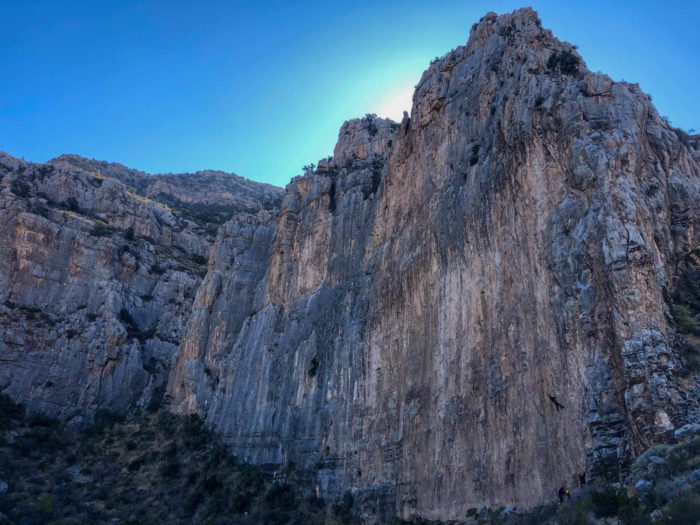
Yes, this comprises three “areas” in three different states. The limestone, basalt, and sandstone cliffs in this region are where Arizona, Nevada, and Utah converge. They are so close together that you can consider it all one area. And borders are just arbitrary lines drawn by humans anyway, especially when we’re talking about ancient terrains like the vast, open desert and the low mountain ranges found here.
There is the forbidding highway-side limestone of the Virgin River Gorge’s Blasphemy Wall and the ever-popular technical lines on the towering Grail. The bulging swells of the Wailing Wall and the Cathedral can look intimidating, but the resort-style basalt cragging in Crawdad Canyon seems inviting. Red rocks like the sandstone of Snow Canyon State Park promise loads of friction, and the sunny, bulging sport crags of Turtle Wall and Chuckawalla Wall deliver nothing but fun. Finally, futuristic testpieces of Arrow Canyon await the hardened. The Mesquite/St. George area has it all.
And it has all the grades — from fun, techy 5.10s on water-drop-stippled limestone slabs to gently overhanging, arm-blasting 5.11s and 5.12s. There are also Euro-style tufa/pocket/colonette 5.13s and 5.14s on wind- and water-sculpted limestone.
Best of all, it’s a sunny, dry region with plenty of sun/shade options depending on ambient temps and the time of year you visit. So pick a crag or canyon and explore. You won’t be disappointed.
The Basics
- Season: Late autumn through early spring (though many of the north-facing walls will be cold in the dead of winter)
- Camping: You’ll find many options for dispersed camping in the desert or relatively cheap hotel rooms or Airbnbs in the resort towns of Mesquite and St. George.
- Guidebooks: Rock Climbs of Southwest Utah & the Arizona Strip and The Limestone Bible
- Recommended routes: Moucha (5.10b), The Garden of Eden (5.10d), Khaleesi (5.11c), Mesquiter (5.12a), Heretic Wisdom (5.12a/b)

